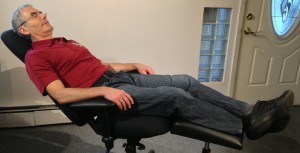As part of my blog, I would like to pass along trial offers from our vendors who provide excellent equipment solutions. Often, you can’t beat getting your hands on a device to evaluate its effectiveness for yourself or your ergonomics program.
So, this offer just came to my attention from Kinesis. They make one of the most versatile and innovative keyboards I know. It does cost more than the usual collection you find in most supply stores, but there isn’t a more adjustable and well thought out keying solution.
I will admit to defaulting to less expensive options to honor my client’s budget concerns. However, in the long term, these high quality keyboards prove themselves a worthy investment. Further, the Kinesis Freestyle2 not only seems to work better for almost anyone, they are my go-to option when all else fails.
If you have your own in house ergonomics program, it is well worth your while to have at least one of these around for fitting purposes.
You are also certainly welcome to visit us at our showroom here in Anchorage for a fitting and demonstration.
Here is the message from Russ Hitt, a very knowledgeable sales consultant at Kinesis:
Hope things are well today in Alaska!
I just want to remind you about the Freestyle2 keyboard Demo Program which provides a free trial sample of the Freestyle2 keyboard and accessories to your corporate clients that qualify (and also qualifying ergo consultants).
We understand a picture or description doesn’t always ensure the correct product is being recommended to an employee and, in many cases, the user really needs to try it out first.
In order to qualify there are two simple eligibility requirements:
• The organization has an active office ergonomic program
• A key person with the organization that is involved in office ergonomics participate in a short (20-25 minute) Online Training Webinar to determine which Freestyle2 keyboard item(s) would be appropriate
If this is ever of interest please either reply to me or you can have them submit this form at our website. If I hear from anyone in Alaska I’ll be sure to let you know.
Thank you,
Russ Hitt | Kinesis Corporation
800.454.6374 x529 | kinesis-ergo.com



